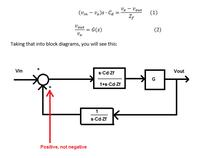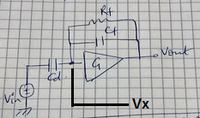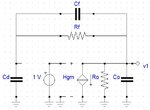tisheebird
Member level 5

Hello Friends,
I am designing a Charge sensitive amplifier and would like to study about the stability.
we know, A/1+AB where AB is the open loop gain. If AB is equal to -1 then the system will oscillate. How would I know that AB will be equal -1. Please tell me the how to calculate.
A= G sCdRf/ 1+sRf( Cd+Cf)
B= 1+sRfCf/sRfCd...
Please guide me with the solution.
I am designing a Charge sensitive amplifier and would like to study about the stability.
we know, A/1+AB where AB is the open loop gain. If AB is equal to -1 then the system will oscillate. How would I know that AB will be equal -1. Please tell me the how to calculate.
A= G sCdRf/ 1+sRf( Cd+Cf)
B= 1+sRfCf/sRfCd...
Please guide me with the solution.






